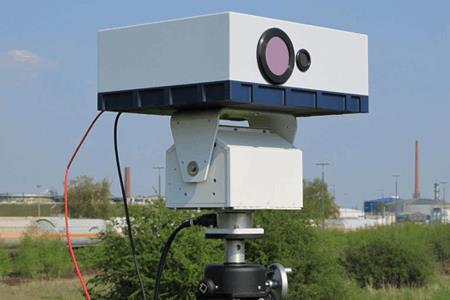Passive Remote Identification Of Gases And Liquids With Hyperspectral Imaging
By René Braun
Hyperspectral imagers can serve on the battlefield as mobile or stationary early warning systems for chemical warfare agents.
 When attempting to mitigate risk in a complex, hostile environment, reliable information on the presence of potentially hazardous chemicals is vital. Gathering the information before entering the scene is the potential of remote sensing Fourier transform infrared (FTIR) spectroscopy. Hyperspectral imaging allows the detection and mapping of both airborne and liquid compounds without the requirement of an active source of radiation. It provides information about the position, distribution, and propagation of a target compound.
When attempting to mitigate risk in a complex, hostile environment, reliable information on the presence of potentially hazardous chemicals is vital. Gathering the information before entering the scene is the potential of remote sensing Fourier transform infrared (FTIR) spectroscopy. Hyperspectral imaging allows the detection and mapping of both airborne and liquid compounds without the requirement of an active source of radiation. It provides information about the position, distribution, and propagation of a target compound.
Investigating dangerous chemicals using passive infrared spectroscopy is a well-established technique for the detection of airborne compounds. Bruker, whose instrumentation was used to provide this article’s examples, is among the manufacturers offering both scanning imaging devices and their successors, hyperspectral imagers. Such scanning and imaging devices are routinely used by emergency responders for the analysis of toxic gas clouds. Both mobile devices are designed for field use and can be operated from vehicles and helicopters.
Get unlimited access to:
Enter your credentials below to log in. Not yet a member of Photonics Online? Subscribe today.
